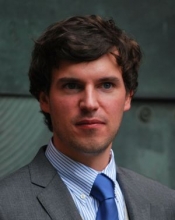MAE Seminar: Seamlessly Bridging from Atomistics to the Continuum in Metals – Mechanical and Computational Challenges

Graduate Aerospace Laboratories
California Institute of Technology
Abstract: Understanding the complex mechanical response of solids requires a scale-spanning approach that includes the various microstructural mechanisms from the atomistic scale all the way up to the macroscale. For metals, e.g., this spans the scales from point defects to the intricate dislocation network to the polycrystalline grain structure. The predictive modeling and the design of novel materials especially must rely upon input from first principles and the atomistic scale and heavily relies on techniques such as molecular dynamics (MD). Unfortunately, computational resources prohibit the use of such methods at technologically relevant length and time scales. Therefore, we make use of spatial coarse-graining in order to export atomistic accuracy to significantly larger scales (completely avoiding phenomenological continuum models). For crystalline materials, the so-called quasicontinuum (QC) approximation combines full atomistic resolution in regions of interest and a continuum representation based on interpolating atomic positions in smoothly deforming regions. Here, we discuss a new suite of simulation techniques based on the original idea of the QC method but enhanced to allow for atomistically rooted 3-D simulations closer to technologically and scientifically relevant scales. We review the kinematic and thermodynamic concepts of coarse-graining crystalline atomic ensembles and discuss recent advances that improve the accuracy and allow for fully-adaptive simulations. We also show how the integration of mechanics and computational science can help us target the larger scales. Finally, we highlight example applications including defect interactions, void growth and ductile failure in metals, and extensions to truss networks.
Bio: Dennis Kochmann is an assistant professor in Caltech's Graduate Aerospace Laboratories (GALCIT). He graduated from Ruhr-University Bochum (Germany) with a degree of Dipl.-Ing. (Diploma in Engineering) in mechanical engineering/applied mechanics with distinction in September 2006. He spent one year as a Fulbright fellow at the University of Wisconsin-Madison, where he worked with Professors Walter J. Drugan and Roderic S. Lakes and was awarded a master's degree in engineering mechanics in June 2006. Under the advisement of Professors Klaus Hackl and Chau Le, he received a doctorate from Ruhr-University Bochum's Department of Mechanical Engineering in June 2009. After the completion of his doctoral degree, he first moved to the University of Wisconsin-Madison as a postdoctoral associate in the Department of Engineering Physics, before he came to Caltech in September 2010 as a postdoctoral scholar in aerospace and as a Feodor Lynen fellow of the Alexander von Humboldt Foundation. He joined the faculty of GALCIT in September 2011. His research comprises theoretical, computational and experimental solid mechanics and aims to understand the scale-bridging relations between microstructure and macroscopic properties in a wide range of materials (including metals, ceramics, and composites) with a focus on understanding and utilizing instabilities across scales.
For more info, visit www.kochmann.caltech.edu
Share
Upcoming Events
-
MSE Special Seminar: Architecting 3D Complex Materials for Sustainability
-
MSE Special Seminar: Decarbonizing Industries for a Climate-resilient Future - From Renewable Energy to Sustainable Material Recovery
-
CBE 298 Seminar: The Wisdom of the Crowd: Watching Bacterial Collectives (Re)shape Themselves
-
CEE Seminar: BIM and the Digital Twin
-
MSE Special Seminar: Revolutionizing Battery Technology - Engineering Quantum Materials for Enhanced Safety and Performance in Solid Electrolytes
